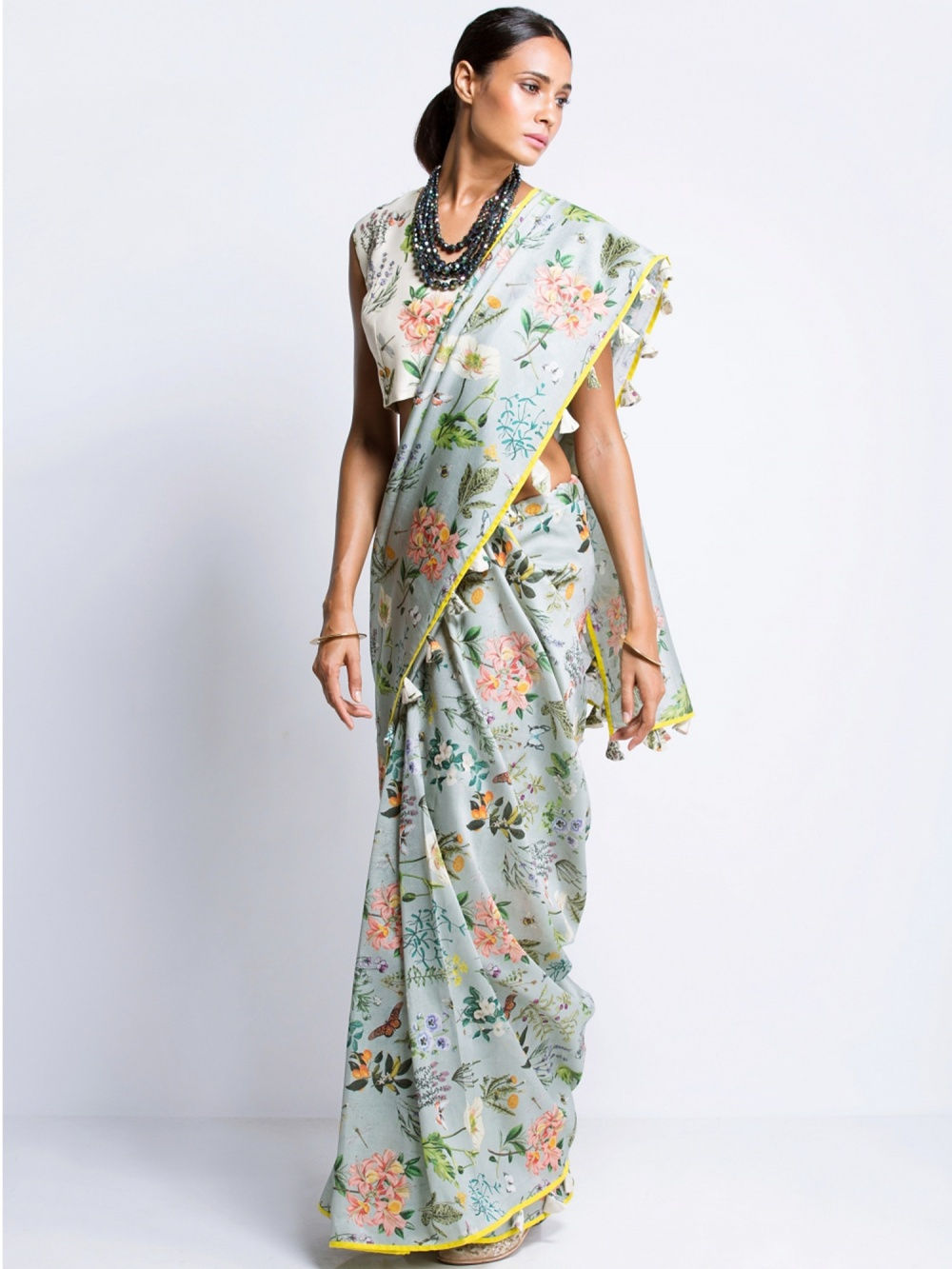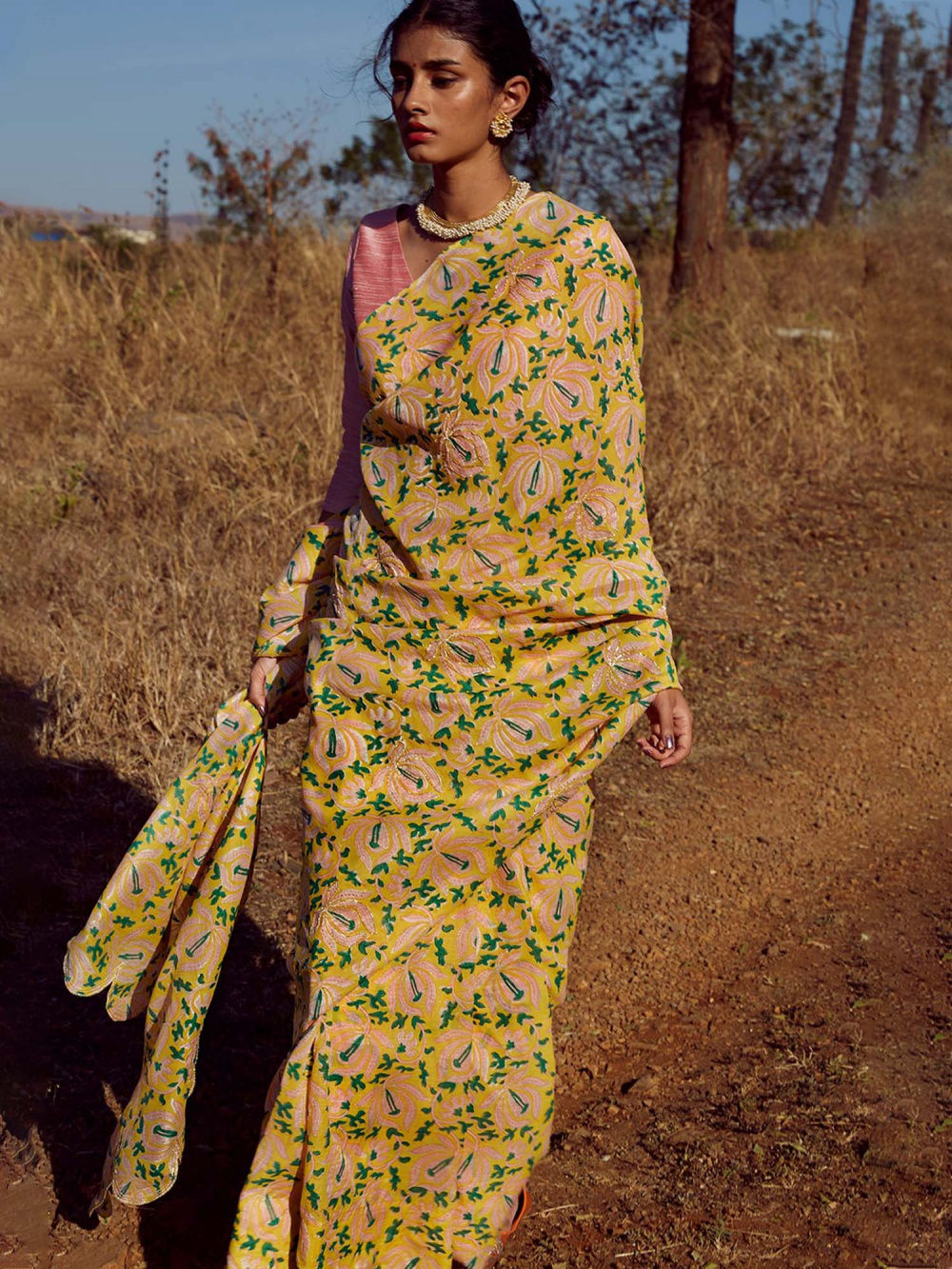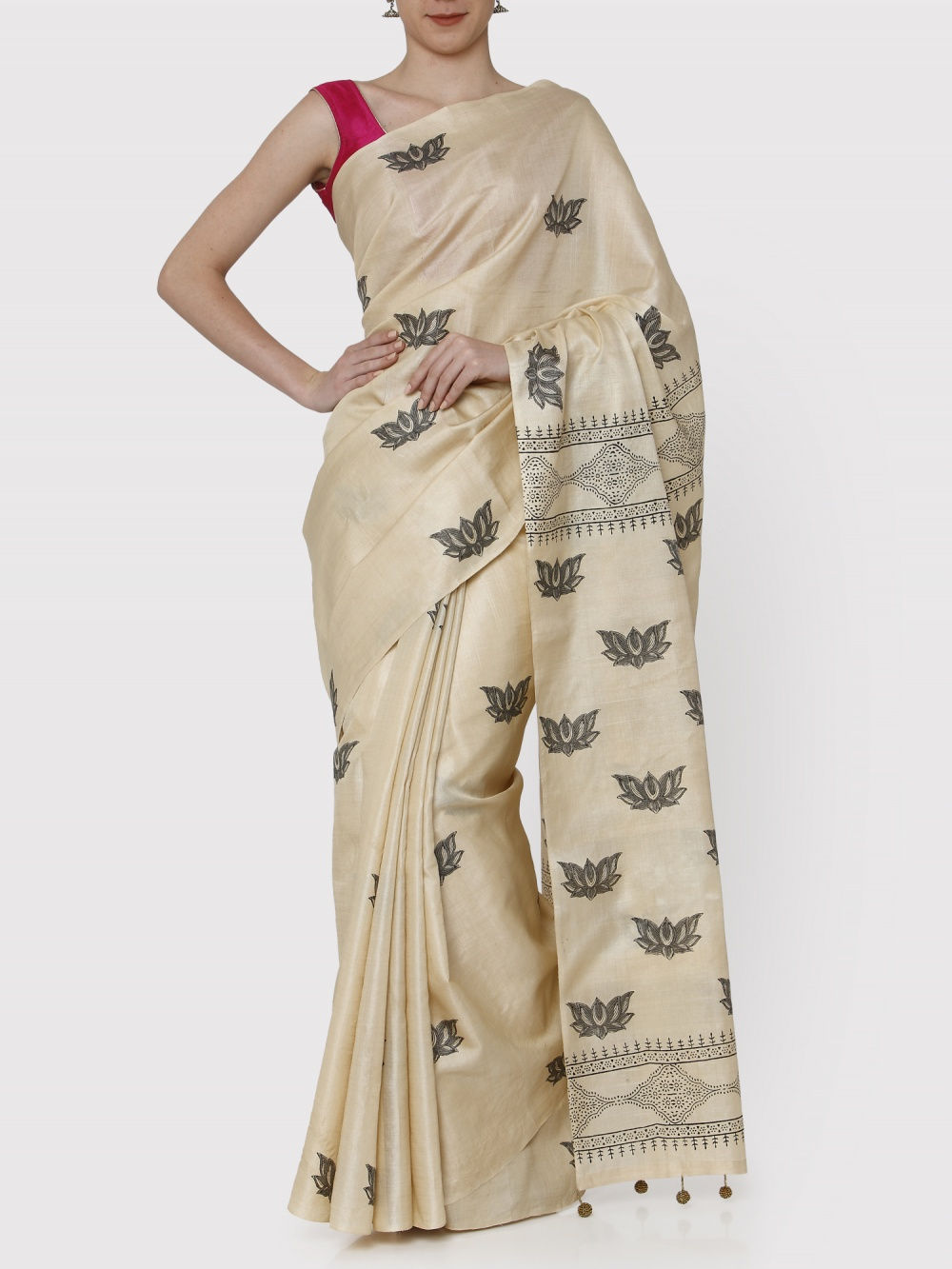
“My love affair with saris can be traced back to my twenties. I was a student at IIM Ahmedabad and at the time women weren’t taken very seriously, especially if they were young. The sari, for me, had the strength to change that – it brought a sense of seniority and commanded respect. This stayed with me when I began working and lead me to reach for the silhouette for important meetings. Soon meetings became a regular feature in my life and saris became indispensable to my work wardrobe.
It’ll come as no surprise that back in the day a large chunk of my pay was spent on saris. If it was an exquisite weave or craft, I had to have it and that continues to hold true. I’m always on the search for the perfect patola or an even better bandhini than the one I already own. I also have a soft spot for Lucknowi chikankari, Benarasi, hand-painted and kantha saris. One thing that has changed over the years though is my choice of colours. I used to favour bright shades like fuchsia, orange and parrot green but now I tend to veer towards subdued pastels.
When it comes to the ease with which I can drape saris, I have my mother-in-law to thank. As soon as she would see me in a sari, she would adjust it and watching her do that on the daily, I became pretty good at it myself. Now it takes me about two to three minutes to drape an easy one. I have what I like to call comfort saris that I wear every day and then there are nice saris reserved for external meetings or special occasions.
Today, my collection has somewhere between 200 to 250 saris and the one lesson I’ve been left with having worn and collected the six-yard staple over decades is one size does not fit all. Most people feel like they can share saris but I disagree with that. Finding the right width and length suited to your body type is so important. Having said that, I believe when a woman goes into a wardrobe where she has a lot of saris to choose from, she tends to subconsciously pick the one that takes care of all these factors.”













